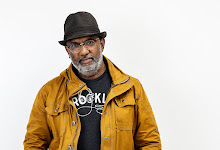These days when I drive down a highway or walk down a street, I find my attention drawn to the back of cars to spot if they have tailpipes. In New York City I rarely find one without.
Two months ago I bought my first electric vehicle (EV). I never thought not having to hear an internal combustion engine fire up and not inhaling gasoline fumes, would be such a refreshing change. With petrol prices at record highs and the world screaming foul at fossil fuels, I get an extra kick out of traveling in a machine that makes a strange whirling sound when it idles and charges like my phone. I also feel less filthy.
As more companies enter the market and the supporting infrastructure is expanded, owning an electric car in America is becoming more and more affordable. While ownership is growing, many are still hesitant to make the transition.
At the end of 2020, I installed solar panels on my brownstone in Brooklyn. The power I generate every day from it is fed into the electric grid making my meter spin backwards. The power I consume is offset by the power I generate, a concept called “Net Metering” in the renewable energy world. Since the day I got my panels working, I consume less energy than I produce. My electric bills are negligible.
The installation cost will breakeven in over seven years, thanks to federal and state tax credits. The app on my phone that monitors my power generation says I prevent inordinate amounts of CO2 from being released into the atmosphere everyday, placating my conscience as the planet barrels towards some kind of an apocalyptic future.
So I feel I am doing my part in this moment in time where a climate crisis seems to be at the top of every nation’s agenda and adds to the anxiety of many, already exacerbated by the pandemic.
Whether I am really making a difference is something very difficult to assess. If the power I use to charge my car is being produced from fossil fuel, it defeats the purpose. But for the moment it makes me feel I am doing something for the greater good, just as taking the vaccine felt in a pandemic.
Leaders, diplomats, activists, scientists and bankers from 200 countries met in Glasgow, United Kingdom this month to acknowledge the calamity facing the planet. At the COP26, global warming was a reality and not a rhetorical argument between the left and the right, or science believers and the lunatic skeptics. The reality of global temperatures rising above 1.5 degrees centigrade is a real threat facing humanity and there is no dancing around this fact with fringe theories and beliefs, as glaciers shrink and polar ice melt right in front of our eyes.
And so they flew in on private jets to hash out a plan to tackle this global threat in earnest. The speeches sounded promising and there was hope that a robust agreement would emerge in response to this seemingly insurmountable menace.
What emerged after days of negotiations was a watered down agreement that does very little to combat the peril in the urgency that is needed.
The rich countries wanted more sacrifices from the poorer countries. The poorer nations blamed the rich ones for causing the catastrophe. While acknowledging this, the rich ones agreed to pay the poorer ones to rapidly cut their green house emissions. While India, home to 17% of the world’s population and host to 20 of the globe’s 30 most polluted cities, wanted to keep burning coal and promised to reach net zero by 2070, two decades later than most nations.
So in the end, while there was an acknowledgement by everyone present that something needs to be done on an accelerated pace, the hard sacrifices that need to be made were a bit too tough for humans to swallow. Politics as always got in the way of real progress.
And so everyone went home on their jets looking forward to COP27, and the agreement that got drafted promises to do very little to change the trend of how we live with nature and devour resources like they are limitless.
The pandemic has taught us many lessons. It is now teaching us another one. Global supply chains are hampered and the insatiable human appetite for consumption is being irked.
As global inflation and an energy crisis looms, America is feeling the pinch. Reports of new cars being in short supply due to a microchip shortage and sticker shock at the grocery store and the gas station dominate the news. Black Friday and Christmas shopping could be hampered by less choice, and that is far more troublesome to many than global warming.
Americans are having to pay more for petrol, pork, eggs and milk and this could bring down the government in the next election is the speculation.
Recently a report on television talked about how average Americans are feeling the pain and as a result the President’s approval rating is plummeting. The reporter concluded the story by talking about a consumer who normally fills “premium gas” in his car, is now having to make the hard sacrifice of filling “regular”. An indicator of American suffering.
While I feel fortunate to be driving an electric car at a time when fuel prices are at a record high, and hope that this will push consumers away from heating the planet, I am aware there is a lot more fossil fuel to burn before anything substantive can occur, in the way of helping mother earth and rescuing the human race from calamity in any pointed way.
The inability of the human species to act as one to combat a virus was revealed in the current pandemic. While it is important to be hopeful and optimistic about the future, it is hard to pin one’s faith on human unity when faced with an impending apocalypse.
It is what it is.
